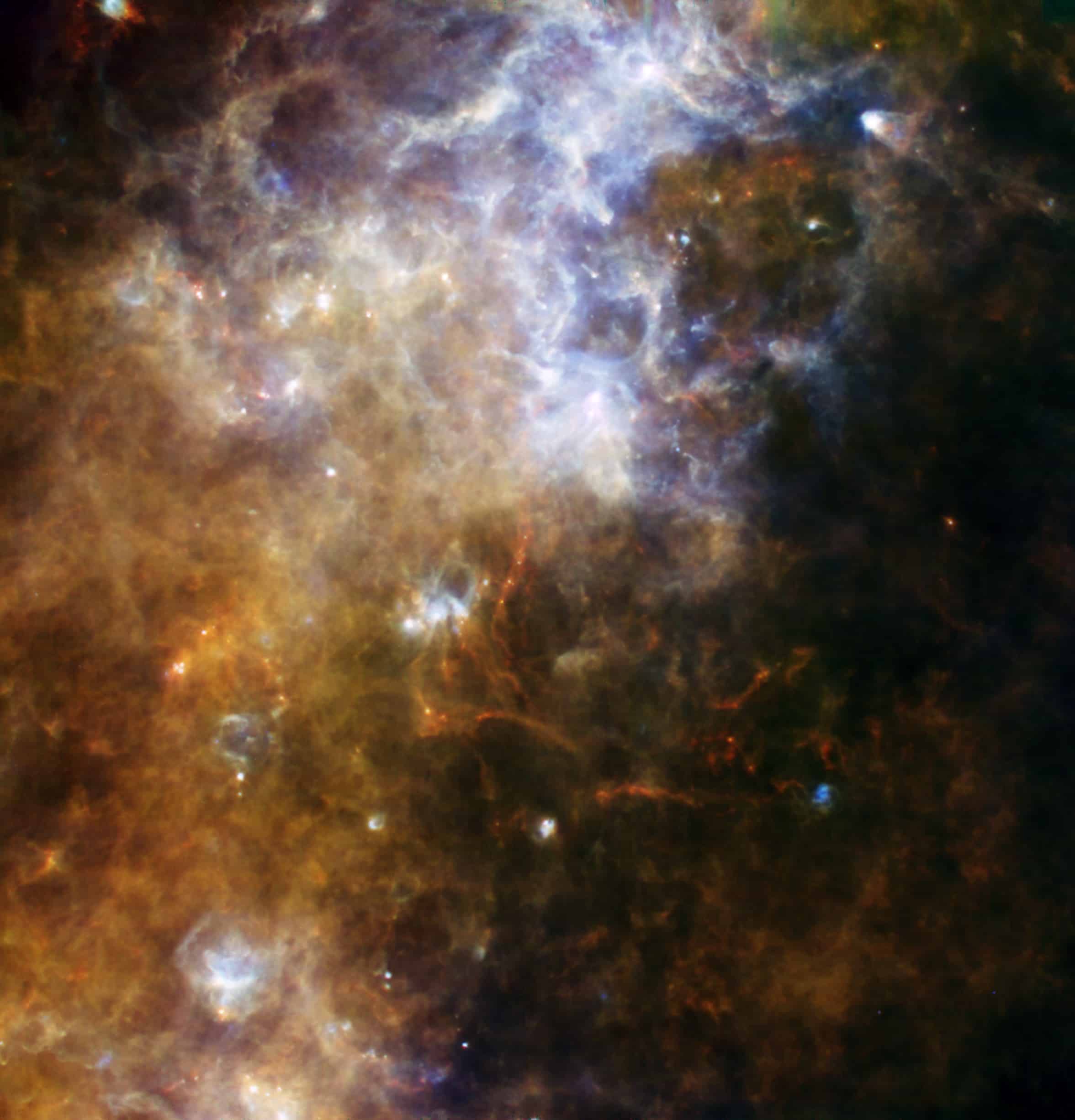
Space chill (credit: ESA/PACS/SPIRE)
By Michael Banks
The European Space Agency (ESA) has released the first images taken by its Herschel space telescope during a calibration run last month.
The awe-inspiring images show cold gas clouds lying near the Milky Way — thousands of light-years from Earth. Five infrared wavelengths have been colour-coded in the image to differentiate very cold material (shown in red) from the surrounding, slightly warmer stuff in blue.
Herschel — named after the German-born astronomer who in 1781 discovered Uranus — is a far-infrared and submillimetre telescope that will study star formation in our galaxy and galaxy formation across the universe.
Herschel was launched in April together with ESA’s Planck mission — a microwave observatory that will study the geometry and contents of the universe by finely measuring the comic microwave background (CMB) radiation, which is a remnant of the Big Bang.
The both occupy a place in space called the Lagrange point L2 — where a probe can usefully hover, little disturbed by stray signals from home and without having to use much fuel to keep it in position.
Herschel will investigate light with wavelengths of 55-670 μm and the satellite will look back to the early universe to see galaxy formations that are invisible to the likes of the Hubble Space Telescope because of gas and dust.
Larger areas of the Milky Way will now be surveyed by Herschel so look out for more cool images soon.



